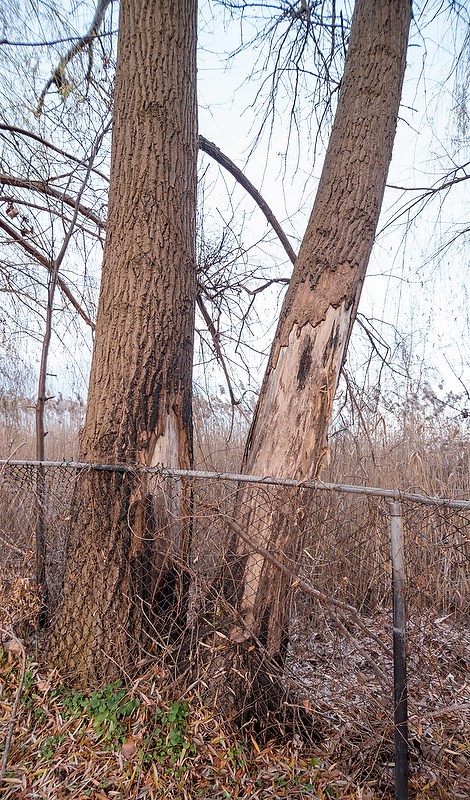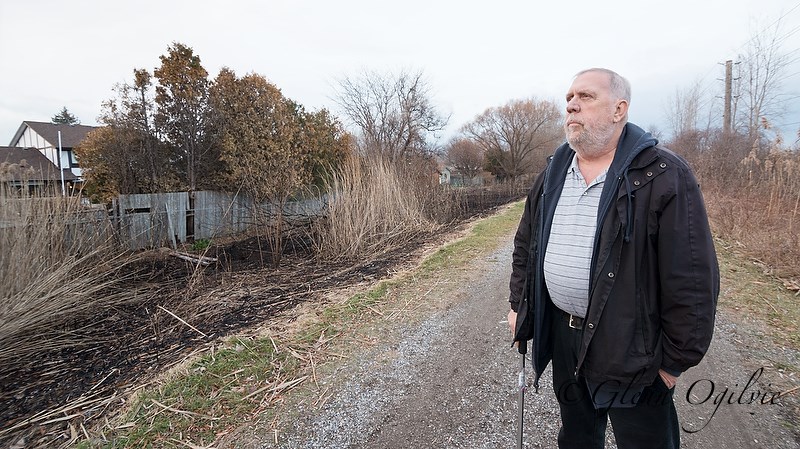Jack Poirier
For the Journal
Add “fire hazard” to the list of reasons to be concerned about invasive phragmites.
Stands of the tall reed have been set ablaze more than a dozen times in the past five years on the Howard Watson Nature Trail. The most recent incident, on Nov. 17, saw Sarnia firefighters arrive in a pumper truck to snuff out a grass fire that damaged property and scorched an area 30 metres long.
Don Salisbury has lived the past 30 years in a home that backs onto the nature trail.
"There's been so many (fires),” he said.
Behind his home he points out the signs of damage: seared fencing, blackened trees, including a 50-foot birch behind a neighbour's home that Salisbury says will have to eventually come down.
"It's like an inferno when it goes up,” he said. “The flames were shooting 20 feet in the air."
Public education officer Mike Otis said Sarnia Fire and Rescue has received 15 calls reporting phragmites fires on the Howard Watson Nature Trail in the past five years. Of those, 13 needed firefighters to extinguish the blaze.
"We go there a lot," he said. "I can tell you that (phragmites) goes up like kindling. It's so light and dry and there is so much of it."
Someone tossing a cigarette butt off the trail can easily ignite it, Otis said.
To be proactive, Salisbury has cleared the invasive weed six foot out from his back fence. Using a cane, he points out the area, and admits it’s becoming increasingly difficult as he gets older.
There’s also the impact on his pocketbook. His home insurance rates have more than quadrupled in 10 years, with the most significant jump following a 2013 trail fire that damaged his garage and destroyed a row of cedar trees between the garage and fence line.
"That fire caused $10,000 in damage," he said. "My cedars went up like Roman candles."
Salisbury said he has contacted the city to see what can be done to remove the phragmites from the trail, where it grows as high as 12 feet (3.7 metres)
But the problem isn’t confined to Sarnia’s popular nature trail. Municipalities across Ontario are grappling with the spread of the reed, which has invaded ditches, highway medians, wetlands and basically bullied its way into many native habitats.
Sarnia has tried different ways to thwart its spread, including the use of herbicides and controlled burns. Local groups including the Sarnia Urban Wildlife Committee, Friends of the St. Clair River and Return the Landscape have joined the battle against phragmites.
In Lambton, various groups are also banding together, including municipalities, the St. Clair Region Conservation Authority and the Lambton Shores Phragmites Community Group.
Facts about phragmites australis:
* introduced to Canada from its native Eurasia
* first appeared in the St. Clair River area in the 1940s
* greatest period of spread in SW Ontario was the 1990s
* each seed head contains at least 2,000 seeds
* can grow to five metres (16.4 feet) and as dense as 200 stems per square metre
* releases toxins into the soil that impedes growth of other plants
* Ontario has no approved herbicides for use against invasive phragmites in aquatic environments
Source: Ministry of Natural Resources

